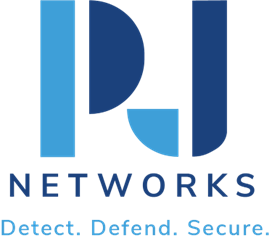Why Enterprises Need eScan DLP & How It Prevents Data Exfiltration
In an era of interconnectivity, the theft of intellectual property is more prevalent than ever in major corporations. Money Matters: Malicious actors love a find — and what is more valuable than financial information (YOURS), personal employee information (also YOURS) and they go for the gold with proprietary company data. Therefore the need to protect this data is indispensable. Among leading data security solutions is eScan Data Loss Prevention (DLP). This blog story exposes how eScan DLP blocks data exfiltration in business organizations, strengthening the enterprise data security and safeguard from data breaches for your businesses.
What is Data Exfiltration?
Data exfiltration, or data theft, is the unauthorized transfer of data from a computer or network. This can happen in a variety of ways, from phishing attacks or malware infection to internal employees taking company secrets with them on their way out. Data breaches reveal their disruption to the public eye while data exfiltration happens silently — but equally toxic — in the background of a company. This data can be sold on the black market, as a competitive advantage or used in extortion against the enterprise from who it was stolen.
Understanding the subtleties of data exfiltration and where it fits in within the periphery of enterprise data security, prepares you better to not only combat data exfiltration effectively but also help devise strategies around mitigating its risk.
Common Exfiltration Methods in the Enterprise
Enterprises are a target because of the vast amount and type of data they have. Following are a list of possible data exfiltration approaches that an attacker can use:
- Phishing Attacks: Attacker makes the user to reveal sensitive data or download malware which then results in unauthorized access to the information.
- Malware
- Ransomware
- Ad/support Bot, programs that can be accidentally installed to devices which gives attacker access data and able transfer failure without track.
- Insider threats: A very common chance is that using their usual login credentials, non-malicious employees are sending your sensitive data outside.
- Cloud storage: Improperly configured cloud services can be an unlocked gate, enabling attackers to penetrate the confidentiality of sensitive data.
- Physical Data Theft: Laptops, USB drives or other physical devices with stored secret data can get lost or stolen.
Enterprises can prepare their defenses against what they now know are the common exfiltration methods used. This is where a complete solution like eScan Data Loss Prevention (DLP) fits in.
How eScan DLP Prevents Data Exfiltration
The eScan DLP features and enterprise data security strengthens the system to recognize, observe as well as hinder important efforts to exfiltrating worth of data.
- Live Notifications: eScan DLP maintains continuous live tracking of network traffic and endpoint communications for instantaneous spotting of any aberrant activities on the move.
- The content analysis will facilitate the detection of sensitive information with advanced content technique, preventing it from leaving the network through unauthorized channels(eScan DLP).
- Behavioral Analysis: Behavioral analysis tools help the solution know how employees typically access data. Those anomalies are what trigger an alert and a potential block of the data leak from happening.
- Policy enforcement: With eScan DLP, enterprises can enforce security policies with a strict hand. These policies determine who can access lifetime data and how that data can (or cannot) be accessed or shared.
- Cloud Security: Its cloud protection checks and protects cloud resident data/ data in transit from any potential exfiltration opportunities.
eScan DLP covers the gamut of enterprise data security, making it a competent network that detects and blocks attempted data theft thereby preventing sensitive information to leak out from organizational boundaries.
Best Practices to Stop Data Exfiltration
Preventing data loss is a two-part equation, involving the use of technology as well as strong corporate policies. Enterprise best practices
- Employee Training: Frequent cybersecurity education “refreshers” to teach employees about the latest types of phishing, malware and insider threats.
- Data Classification & Management: Categorize data by sensitivity and provide the highest level of security for important data.
- Constrain access: Practice principle of least privilege; grant employees only what they need to do their job.
- Configuration; Comprehensive auditing and logging — It is essential to have auditing and logging enabled for all data access points to track any unauthorized access that may happen at anytime which bibliophiles swift detection.
- Incident Response Plan: Create a solid incident response plan in the event of any exfiltration attempt being discovered — responding as quickly as possible, mitigating greater damage.
- Regular Security Assessments: Perform regular security assessments and penetration tests to pinpoint vulnerabilities and repair them.
With these best practices along with tools such as eScan DLP, enterprises can strengthen their defenses and prevent any unauthorized data theft of their most precious resource — DATA.
Cyber security, meanwhile, is a moving target as attackers become more advanced. Business data amounts continue to increase, along with the unsafe conditions for exfiltration of it. Enterprises can strengthen the data security posture by using an optimal approach combining intelligent tools like eScan DLP and best practice security measures. In this way, they are safeguarding their data and the trust of clients, partners, and stakeholders — something that is invaluable within the digital business world of today.
Based on above discussion, eScan DLP provides the foundation for modern enterprise security strategies. Capability of identifying and preventing data exfiltration attempts, which helps in securing sensitive enterprise data against threat.
